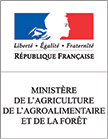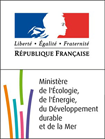
I was born and raised in Xalapa, a city located in the mountain region of the southeast of Mexico. The city is surrounded by tropical cloud forest – one of the richest ecosystems in terms of biodiversity in the world. It is almost impossible to describe with words the beauty of the landscapes in the region, but I hope that the picture above can give you a hint!
As a resident of the city for the first 25 years of my life, I could not avoid falling in love with such beautiful landscapes: the view of foggy afternoons and the rhythmic sound of falling rain, typical weather conditions in the region, are images that always bring my memory back home.
However, during that time, I also witnessed a radical and abrupt change in the city’s landscape: as a result of urban expansion, dozens (or maybe hundreds) of hectares of forest were cleared to open space for alternative land uses.
The most common opinion about the deforestation process experienced in the region was that it was an unavoidable side effect of a growing population and development. However, I did not share that opinion. I felt that there were smarter ways to deal with a growing population and –definitely– there was something wrong about that kind of “development”. I desperately wanted to do something about it.
My first step, then, was to study the causes of deforestation and its consequences. By that time, as a student of economics, I learned that deforestation can be explained as a combined result of rational behavior – it is, resources (in this case land) are allocated to its more preferred or profitable use – and the presence of externalities – a situation in which markets fail to allocate resources efficiently. Simply said, forests are cleared because the environmental services they provide are not fully considered in decision-making processes.
In addition, I also learned that the consequences of deforestation are plenty and they range from local ones -such as loss of biodiversity and provision of ecosystem services- to global ones -such as massive emissions of greenhouse gases. In fact, nowadays it is widely recognized that deforestation is one of the main drivers of climate change.
At that point I realized that deforestation was a global concern and many international organizations, national governments and research entities are working all over the world to combat it. My desire was, therefore, to join those efforts and contribute to develop mechanisms that can reverse the current situation, not only in my region and country but also (hopefully) all over the world.
With that idea in mind, I started to develop what currently is my doctoral research project (I would like to acknowledge the Faculty of Economic Sciences of the University of Warsaw for giving me the chance to do this). The basic idea is that by optimizing landscape functions, it is, in principle, possible to improve environmental, social and economic indicators while avoiding deforestation. Now I just need to demonstrate it!
I consider that after my participation in the Youth in Landscapes Initiative 2015 my point of view about the problem will be significantly broadened and, as a result, my future contribution will be more relevant.
I can’t wait for the YIL 2015 to begin!
Martin Alfonso Lopez Ramirez is one of the 10 young champions who will work on the “ Rights and Tenure” Landscape challenge with Youth program’s partner: CIFOR.
Learn more about the Global Landscapes Forum’s Youth program, meet our 50 youth champions and discover the 5 Landscapes challenges they will take up, in December, in Paris.





































